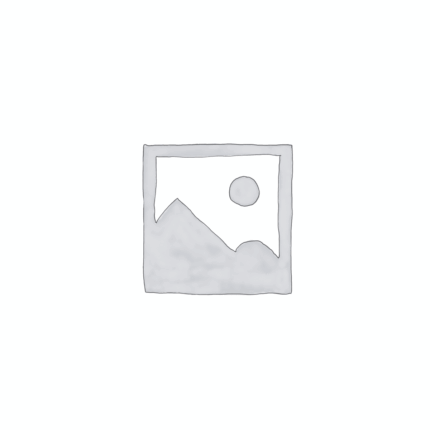Aluminium Silicate
Aluminium silicate is an inorganic compound composed of aluminum, silicon, and oxygen, often found naturally as a major component of clay minerals such as kaolinite, halloysite, and other aluminosilicates. It is a white to off-white powder with excellent thermal stability, chemical inertness, and physical durability. Due to its wide range of physicochemical properties—including high melting point, non-toxicity, and adsorptive capabilities—aluminium silicate is extensively used across diverse industries including ceramics, paints, paper, rubber, plastics, cosmetics, and pharmaceuticals. Its unique structure imparts benefits such as heat resistance, improved mechanical strength, and anti-caking properties, making it a vital raw material in both industrial and consumer products.
Aluminium Silicate Uses
Primary Uses
Ceramics & Refractories
- Essential raw material in porcelain, sanitary ware, tiles, and advanced ceramic products.
- Key ingredient in refractory bricks and kiln linings, providing resistance to heat, thermal shock, and chemical corrosion.
- Enhances mechanical strength and dimensional stability at high temperatures.
Paints & Coatings
- Functions as an extender pigment, improving opacity, durability, and weather resistance.
- Improves adhesion and hardness of coatings, contributing to abrasion resistance and surface protection.
- Controls rheology and prevents cracking in dried paint films.
Paper Industry
- Used as a coating pigment and filler to boost brightness, opacity, and smoothness of paper surfaces.
- Improves printability, ink holdout, and reduces dusting during handling.
- Contributes to paper’s tactile quality and strength.
Rubber & Plastics
- Reinforcing filler in tires, hoses, belts, and molded plastic products to enhance strength, abrasion resistance, and durability.
- Improves thermal and dimensional stability of rubber and plastic compounds.
- Modifies electrical and thermal conductivity in specialized applications.
Cosmetics & Pharmaceuticals
- Acts as an absorbent and anti-caking agent in powders, deodorants, face masks, and makeup products.
- Used in tablet and capsule formulations to improve flowability and manufacturing consistency.
- Its inertness makes it suitable for sensitive skin and topical formulations.
Catalysts & Adsorbents
- Serves as a catalyst support in petrochemical refining and environmental applications.
- Used in purification processes for water treatment and gas filtration.
- Adsorbs heavy metals and organic contaminants due to its porous structure.
Secondary Uses
Detergents
- Used as a builder and anti-caking agent in powdered detergents, enhancing cleaning efficiency and powder flow.
Agriculture
- Acts as a soil conditioner and slow-release alumina/silica source in fertilizers.
- Prevents clumping in granular fertilizers.
Construction Materials
- Added to cement and concrete to improve strength, chemical resistance, and reduce porosity.
- Used in adhesives, sealants, and insulating materials.
Electronics & Electrical Applications
- Electrical insulator and dielectric material in microelectronics and circuit boards.
- Used in manufacturing capacitors and resistors due to thermal stability.
Food Additive
- E559, used as an anti-caking agent in powdered foods like salt, spices, and drink mixes.
- Prevents clumping, improves flow properties, safe within regulatory limits.
Animal Feed & Veterinary Uses
- Used as binder or anti-caking agent in animal feed powders.
- Carrier for veterinary supplements and medicines.
Environmental Applications
- Soil remediation agent immobilizing heavy metals.
- Used in barriers and liners to prevent pollutant leaching.
Textile Industry
- Filler and coating agent in textile finishing to improve smoothness, whiteness, and durability.
1. Basic Identification Attributes
- Chemical Name (IUPAC): Aluminium Silicate
- Common/Trade Names: Kaolin, Mullite (when heated), Aluminosilicate
- CAS Number: 12173-37-6 (kaolinite form)
- Molecular Formula: Variable; general formula Al₂O₃·2SiO₂·2H₂O (kaolin)
- HS Code: 2521.00.00 (varies by country)
- Synonyms: Kaolin, China clay, Aluminosilicate
2. Physical & Chemical Properties
- Physical State: Powder or granular solid
- Color & Odor: White to off-white, odorless
- Melting Point: Decomposes >1750°C
- Boiling Point: N/A (decomposes)
- Density: ~2.6 g/cm³ (varies by form)
- Solubility: Insoluble in water and most solvents
- pH: Slightly acidic to neutral (~4.5-7 depending on source)
- Thermal Stability: High, withstands high temperatures without melting
- Surface Area: Variable, often high surface area due to fine particle size
3. Safety & Hazard Attributes
- Hazard Class (GHS): Generally regarded as non-hazardous
- NFPA Ratings: Health 1 (slight irritant), Flammability 0, Reactivity 0
- Exposure Limits: No established limits; considered low toxicity
- Reactivity: Stable under normal conditions; inert
- Incompatibilities: Strong acids and bases can degrade
4. Storage & Handling Attributes
- Storage: Store in dry, cool environment to prevent moisture uptake
- Container: Sealed bags or drums, moisture-proof packaging recommended
- Shelf Life: Indefinite if stored properly
- Handling: Avoid dust generation; use dust masks and goggles if airborne particles present
5. Regulatory & Compliance Attributes
- FDA: Approved as a food additive (E559) for anti-caking
- EFSA: Approved as food additive
- OSHA/NIOSH: No specific limits
- Transportation: Non-hazardous for transport
- Disposal: Can be disposed of as non-hazardous solid waste, following local regulations
6. Environmental & Health Impact
- Ecotoxicity: Low toxicity to aquatic and terrestrial organisms
- Biodegradability: Non-biodegradable but inert and stable in environment
- Persistence: Persistent but minimal bioaccumulation
- Carcinogenicity: Not classified as carcinogenic or mutagenic
- Environmental Fate: Remains stable, does not readily leach
Safety Handling Precautions
- PPE: Use gloves, goggles, dust masks when handling powders.
- Ventilation: Handle in well-ventilated areas to reduce inhalation of dust.
- Hygiene: Wash hands after use; avoid eating/drinking/smoking while handling.
- Spills: Sweep up dry; avoid water dispersal to prevent dust cloud.
First Aid Measures
- Inhalation: Move to fresh air; seek medical attention if irritation persists.
- Skin Contact: Wash with soap and water; seek medical care if irritation continues.
- Eye Contact: Flush with water for 15 minutes; get medical advice if irritation persists.
- Ingestion: Rinse mouth; seek medical advice if large amounts ingested.
Firefighting Measures
- Fire Hazards: Non-flammable; dust may pose minor explosion risk in confined spaces.
- Extinguishing Media: Water, foam, dry chemical for surrounding fires.
- Special Precautions: Avoid dust clouds; wear respiratory protection if dust present.
Related products
Almond Wax
Aluminum Fine Powder
Aluminum hydroxide
Aquasol
Arabic Gum
Avocado wax
Safety Handling Precautions
- Use gloves and safety goggles to avoid skin and eye irritation.
- Store away from ignition sources as the wax is combustible but with low flammability risk.
- Handle in well-ventilated areas to minimize inhalation of dust or fumes during processing.
- Wash hands thoroughly after handling.
First Aid Measures
- Inhalation: Move to fresh air if respiratory irritation occurs; seek medical attention if symptoms persist.
- Skin Contact: Wash with soap and water; seek medical advice if irritation develops.
- Eye Contact: Rinse eyes thoroughly with water for at least 15 minutes; seek medical help if irritation continues.
- Ingestion: Rinse mouth with water; seek medical advice if large quantities are ingested.
Firefighting Measures
- Fire Hazards: Combustible; may burn producing smoke and toxic fumes.
- Extinguishing Media: Use foam, dry chemical powder, or carbon dioxide (CO₂) extinguishers. Avoid water jets which may spread fire.
- Special Precautions: Firefighters should wear full protective gear and self-contained breathing apparatus (SCBA).


 Pesticides (Herbicides, Insecticides, Fungicides)
Pesticides (Herbicides, Insecticides, Fungicides) Animal Feed Additives
Animal Feed Additives Biostimulants
Biostimulants Plant Growth Regulators
Plant Growth Regulators Fertilizers
Fertilizers Soil Conditioners
Soil Conditioners
 Decoratives
Decoratives Dough Conditioners
Dough Conditioners Fat Replacers
Fat Replacers Flour Treatments
Flour Treatments Leavening Agents
Leavening Agents Preservatives(baking)
Preservatives(baking)
 Bleaching Agents
Bleaching Agents Builders
Builders Enzymes
Enzymes Fragrances
Fragrances Surfactants(cleaning)
Surfactants(cleaning) Solvents (cleaning)
Solvents (cleaning)
 Admixtures
Admixtures Anti-Corrosion Coatings
Anti-Corrosion Coatings Concrete Repair Chemicals
Concrete Repair Chemicals Curing Compounds
Curing Compounds Sealants and Adhesives
Sealants and Adhesives Waterproofing Agents
Waterproofing Agents
 Antioxidants(cosmetic)
Antioxidants(cosmetic) Emollients
Emollients Fragrances and Essential Oils
Fragrances and Essential Oils Humectants
Humectants Surfactants(cosmetic)
Surfactants(cosmetic) Thickeners
Thickeners UV Filters
UV Filters Preservatives (cosmetic)
Preservatives (cosmetic)
 Bio-based Solvents
Bio-based Solvents Biodegradable Surfactants
Biodegradable Surfactants Carbon Capture Chemicals
Carbon Capture Chemicals Renewable Polymers
Renewable Polymers Wastewater Treatment Chemicals
Wastewater Treatment Chemicals
 Acidulants
Acidulants Antioxidants
Antioxidants Colorants(food)
Colorants(food) Emulsifiers
Emulsifiers Flavor Enhancers
Flavor Enhancers Nutraceutical Ingredients (food)
Nutraceutical Ingredients (food) Nutrient Supplements
Nutrient Supplements Preservatives(food)
Preservatives(food) Sweeteners
Sweeteners
 Dried Herbs
Dried Herbs Fresh Herbs
Fresh Herbs Ground Spices
Ground Spices Spice Blends
Spice Blends Whole Spices
Whole Spices
 Analytical Reagents
Analytical Reagents Biochemical Reagents
Biochemical Reagents Chromatography Chemicals
Chromatography Chemicals Inorganic and Organic Standards
Inorganic and Organic Standards Laboratory Safety Chemicals
Laboratory Safety Chemicals Microbiology and Cell Culture Reagents
Microbiology and Cell Culture Reagents Molecular Biology Reagents
Molecular Biology Reagents Solvents(lab)
Solvents(lab) Specialty Laboratory Chemicals
Specialty Laboratory Chemicals Spectroscopy Reagents
Spectroscopy Reagents
 Collectors
Collectors Dust Suppressants
Dust Suppressants Explosives and Blasting Agents
Explosives and Blasting Agents Flocculants and Coagulants
Flocculants and Coagulants Frothers
Frothers Leaching Agents
Leaching Agents PH Modifiers
PH Modifiers Precious Metal Extraction Agents
Precious Metal Extraction Agents
 Catalysts
Catalysts Corrosion Inhibitors
Corrosion Inhibitors Demulsifiers
Demulsifiers Drilling Fluids
Drilling Fluids Hydraulic Fracturing Fluids
Hydraulic Fracturing Fluids Scale Inhibitors(oil)
Scale Inhibitors(oil) Surfactants(oil)
Surfactants(oil)
 Active Pharmaceutical Ingredients (APIs)
Active Pharmaceutical Ingredients (APIs) Analgesics and Antipyretics
Analgesics and Antipyretics Antibiotics
Antibiotics Antiseptics and Disinfectants
Antiseptics and Disinfectants Excipients
Excipients Nutraceutical Ingredients (Pharmaceutical)
Nutraceutical Ingredients (Pharmaceutical) Solvents(pharmaceutical)
Solvents(pharmaceutical) Vaccine Adjuvants
Vaccine Adjuvants
 Antioxidants(plastic)
Antioxidants(plastic) Colorants (Pigments, Dyes)
Colorants (Pigments, Dyes) Fillers and Reinforcements
Fillers and Reinforcements Flame Retardants
Flame Retardants Monomers
Monomers Plasticizers
Plasticizers Polymerization Initiators
Polymerization Initiators Stabilizers (UV, Heat)
Stabilizers (UV, Heat)
 Accelerators and Retarders
Accelerators and Retarders Adhesion Promoters
Adhesion Promoters Antidegradants (Antioxidants, Antiozonants)
Antidegradants (Antioxidants, Antiozonants) Blowing Agents (for foam rubber)
Blowing Agents (for foam rubber) Plasticizers and Softeners
Plasticizers and Softeners Reinforcing Agents (Carbon Black, Silica)
Reinforcing Agents (Carbon Black, Silica) Vulcanizing Agents (e.g., Sulfur, Peroxides)
Vulcanizing Agents (e.g., Sulfur, Peroxides)
 Analytical Reagents
Analytical Reagents Automotive chemicals
Automotive chemicals Electronic Chemicals
Electronic Chemicals Lubricants
Lubricants Photographic Chemicals
Photographic Chemicals Pyrotechnic Chemicals
Pyrotechnic Chemicals Refrigerants
Refrigerants Sealants and Adhesives
Sealants and Adhesives
 Antistatic Agents
Antistatic Agents Bleaching Agents
Bleaching Agents Dyes and Pigments
Dyes and Pigments Finishing Agents
Finishing Agents Flame Retardants
Flame Retardants Softening Agents
Softening Agents
 Antifoaming Agents
Antifoaming Agents Chelating Agents
Chelating Agents Coagulants and Flocculants
Coagulants and Flocculants Corrosion Inhibitors
Corrosion Inhibitors Disinfectants and Biocides
Disinfectants and Biocides Oxidizing Agents
Oxidizing Agents pH Adjusters (water)
pH Adjusters (water) Scale Inhibitors( water)
Scale Inhibitors( water)















